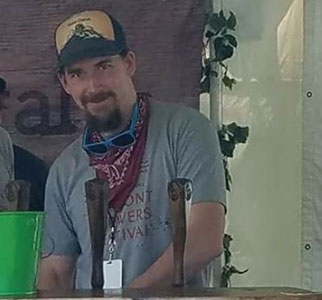Brewing Session Beers: Tips From the Pros
Brewer: Daniel Carey, New Glarus Brewing Company in New Glarus, Wisconsin
Here at New Glarus Brewing we brew the full gamut of beer styles, from light American-style lagers to Belgian-style lambics to double IPAs to roasty stouts and everything in between. I find that all good beers lie on a spectrum between complexity and drinkability. Beer styles such as imperial stouts and barleywines favor the complexity side of the spectrum while a beer like an American light lager favors the drinkability side. When I approach brewing a session beer, my goal is to find that balance along this spectrum. I want every sip to be nuanced, but have the drinker ready for another one when they finish.
I lived in Montana for a number of years in my younger days. I did a lot of backpacking and mountaineering. It was the late 70s and early 80s and there were not a lot of options in the beer aisle. But one beer that really stood out to me back then was Coors Brewing Co.’s Banquet Beer. It had those qualities I look for in a good session beer. The beer was highly drinkable and able to quench my thirst after a big outing, while the noble hops flavor and aroma provided a complexity and character to the beer to make me enjoy each sip.
Simply put, you need to brew the best beer you can. Stay away from kitchen sink beers with lots of unnecessary ingredients. The focus on all session beers should start with a lack of off-flavors. When you brew something like a totally naked lager, there is nothing to hide behind. You need to start with quality raw ingredients. Fresh is best and mishandled, oxidized hops can lead to a cheese-like component to the beer. When malts are excessively handled, you can find a beer that ends up too grainy. Yeast is next on the list of things to focus on. Choose a strain that fits your goal and pitch an appropriate level of yeast. Focus on the ingredients and your brewing technique to avoid these off-flavors from showing up in the finished product.
Packaging is the final step that most brewers have room for improvement. Be extremely gentle with the beer and keep the beer cold. Purging vessels with CO2 is a great trick brewers should practice. Cold storage can keep oxidative reactions down to a minimum. As a pro brewer, when we brew a session beer and send it off to be sold, you may as well be sending a kid to a dance, you ultimately have no control over it. Homebrewers have a huge advantage in that regard.
Fundamentals of cleaning can be very important in this arena. When you package a 6.5% ABV beer or a beer over 35 IBUs, basically nothing can grow in it. It may as well be considered disease-tolerant. But session beers are a different story. Research has shown that brewers who have been using their equipment for 3 years or more and not following proper cleaning protocol, that is about when bacterial issues will begin to arise. This is not a big issue if a lazy brewer is only brewing big ABV beers and hop bombs. If they decide to brew a session beer, they better get ready for problems.
Brewer: Ryan McKeow, Stone Corral Brewing in Richmond, Vermont
“Session” is a meeting of a deliberative or judicial body to conduct its business. Then you introduce “Beer” to it and in many instances there is a lot of conversing or activities taking place while drinking session beers. The lower alcohol beer helps maintain better business practices, sound conversations, and judgment. It’s more for pleasure-seeking purposes rather than drunk foolishness when trying to play the role of an adult.
Personally I don’t recommend exceeding 5% ABV when brewing a session beer – in fact the lower the better. The idea of a session beer has a lot of gray area in terms of ABV content and this is an idea that is constantly changing. I love me some lagers, specifically Pilsners. Not only are they delicious every season of the year but, a truly good session Pilsner is not easy to execute. A well-balanced, quality Pilsner means there is a well-minded brewer behind it all.
As with any other beer, balance and complexity are key but it gets more challenging for this type of beer. I recommend you focus mainly on two key areas, malt and water.
First, don’t forget about the malt. I feel a lot of people tend to go very simple on the grain bill. I’m not saying you need a lot of variety, but there are a lot of fantastic base and specialty malts out there that when used correctly and in mindful amounts, will only add to overall complexity and flavor. If you are using less malt to brew a session beer you need to make sure its presence is still known and that it contributes to the same complexity as any other beer.
The second important factor is water profile. In low ABV beers, the water profile plays a huge role in the finished product. Play around with it and experiment, but don’t make too many changes at once. Try only making a few changes at a time so you can taste and feel the impact water chemistry will have in the finished product. Oh yeah, and not every session beer needs to be an IPA – just saying. Overall remember to have fun with it!




